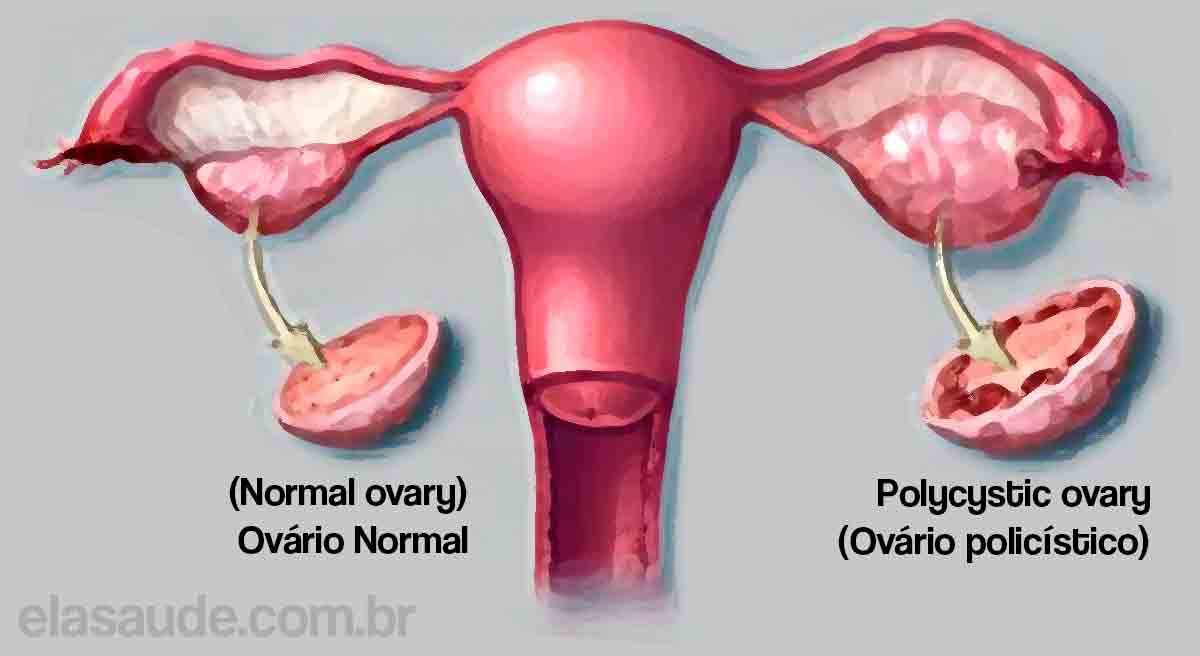
On her social media, Brazilian actress Larissa Manoela announced that she has been diagnosed with Polycystic Ovary Syndrome (PCOS) — a condition affecting about 10% of women of reproductive age, according to studies. The artist also revealed she suffers from endometriosis.
“It’s not easy being a woman. A positive diagnosis is frightening, and I admit it shakes me up,” Larissa Manoela wrote on her Twitter. And although common, many women are unaware of the condition, potentially suffering from its symptoms without knowing what they’re experiencing.
What is Polycystic Ovary Syndrome?

Polycystic Ovary Syndrome is a frequent hormonal change in women during their reproductive period — which spans from the first menstruation to menopause.
PCOS is a multifactorial disease with no single cause. “It is known to be related to various factors, which include insulin resistance and increased levels of androgenic hormones,” reports Paulo Noronha, an obstetrician and partner at Clínica Espaço Mãe, in São Paulo.
According to Cristina Laguna Benetti Pinto, president of the National Specialized Commission in Endocrine Gynecology of the Brazilian Federation of Gynecology and Obstetrics Associations (Febrasgo), PCOS symptoms include three classic signs:
- Menstrual irregularity, which manifests as long menstrual cycles or prolonged periods without menstruating;
- Severe acne and hirsutism (excessive hair on the face, chest, abdomen, and/or thighs) — both clinically diagnosed — or changes in androgenic hormones — diagnosed in the lab;
- Enlarged ovaries with multiple small cysts, resembling a “pearl necklace”.
Additionally, experts mention other common manifestations of the condition, such as difficulty getting pregnant, obesity, risk of diabetes and cardiovascular diseases, increased cholesterol, sleep disturbances, and oily skin or dark spots on the skin.
Diagnosis
A woman should have at least two of the three main symptoms of PCOS to be diagnosed with the condition. “Merely having an ultrasound showing a large ovary with small ‘cysts’ isn’t enough to declare it as PCOS,” warns Cristina, emphasizing the importance of a precise diagnosis.
In this regard, other potential causes of menstrual irregularity besides PCOS should be ruled out. Among these, the expert states that alterations in adrenal glands, thyroid, and prolactin levels (hormone related to breastfeeding) in the body should be excluded.
Treatment
Since PCOS is an incurable condition, treatment relates to its uncomfortable and harmful manifestations.
One treatment approach involves using combined birth control pills that help control irregular menstrual cycles and may reduce acne and hirsutism. However, for women wishing to become pregnant, Cristina points out that ovulation-inducing treatments are available. For the management of other manifestations, it’s up to a doctor to determine other treatments and medications that might replace the pill.
According to Paulo, physical exercises and a balanced diet are essential for PCOS patients to reduce obesity risks and help the body respond better to insulin. This improves ovulation — as well as fertility — and reduces androgenic hormone levels.
Furthermore, specialists report that medications for certain types of diabetes, which help control insulin resistance, can be used in treatment.
Polycystic Ovary Syndrome and endometriosis: when the two conditions coexist
Just like with Larissa Manoela, it’s possible for someone to suffer from both PCOS and endometriosis at the same time. In these cases, Cristina states that treatment is based on the manifestations of both diseases. “Depending on the degree and severity of endometriosis, sometimes we have to use medications that aren’t the first line for PCOS. This is chosen individually,” she explains.
However, she emphasizes that both conditions are incurable and should be treated until at least menopause, as manifestations arise.
For the gynecologist, it’s crucial to point out that both conditions require an accurate diagnosis, and monitoring should be personalized throughout life. “Treatments should be individualized, based on the manifestations and on the desires, for instance, reproductive or non-reproductive, that each woman might have,” she concludes.

